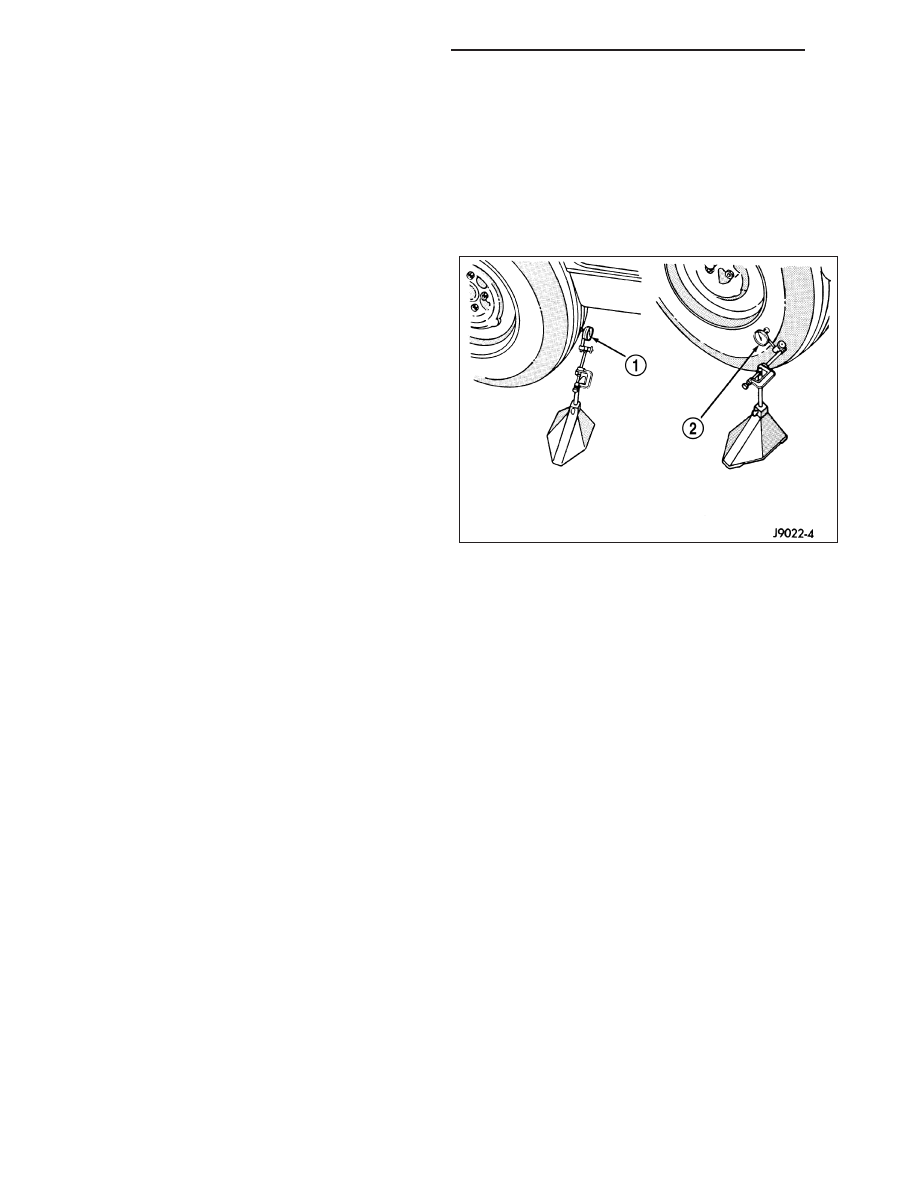Content .. 1266 1267 1268 1269 ..
Jeep Liberty KJ. Manual - part 1268

TIRES/WHEELS - SERVICE INFORMATION
DIAGNOSIS AND TESTING
TIRE AND WHEEL RUNOUT
Radial runout is the difference between the high and low points on the tire or wheel.
Lateral runout is the wobble of the tire or wheel.
Radial runout of more than 1.5 mm (.060 inch) mea-
sured at the center line of the tread may cause the
vehicle to shake.
Lateral runout of more than 2.0 mm (.080 inch) mea-
sured near the shoulder of the tire may cause the
vehicle to shake.
Sometimes radial runout can be reduced. Relocate the
wheel and tire assembly on the mounting studs (See
Method 1). If this does not reduce runout to an
acceptable level, the tire can be rotated on the wheel.
(See Method 2).
METHOD 1 (RELOCATE WHEEL ON HUB)
1. Drive vehicle a short distance to eliminate tire flat
spotting from a parked position.
2. Check wheel bearings and adjust if adjustable or
replace if necessary.
3. Check the wheel mounting surface.
4. Relocate wheel on the mounting, two studs over from the original position.
5. Tighten wheel nuts until all are properly torqued, to eliminate brake distortion.
6. Check radial runout. If still excessive, mark tire sidewall, wheel, and stud at point of maximum runout and pro-
ceed to Method 2.
METHOD 2 (RELOCATE TIRE ON WHEEL)
NOTE: Rotating the tire on wheel is particularly effective when there is runout in both tire and wheel.
1. Remove tire from wheel and mount wheel on service dynamic balance machine.
2. Check wheel radial runout and lateral runout.
•
STEEL WHEELS: Radial runout 0.040 in., Lateral runout 0.045 in. (average-maximum)
•
ALUMINUM WHEELS: Radial runout 0.030 in., Lateral runout 0.035 in. (average-maximum)
22 - 62
TIRES/WHEELS - SERVICE INFORMATION
KJ